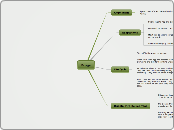Frogs
Amphibians
Spend part of their life on land and part of their life in the water.
Adaptations
Strong legs to hop and swim quickly.
Long sticky tongue to catch insects.
Moist skin to absorb oxygen and moisture from the environment.
Some have brightly colored toxic skin to ward off predators.
Life Cycle
Start off in the water as an egg.
Hatch from their egg and become tadpoles with long tails for swimming and gills for breathing underwater.
Tadpoles eat algae in the water and continue to grow until they lose their tail and develop strong legs and lungs for breathing. They are now called a froglet.
When their legs are strong enough and their lungs are fully developed they leave the water. They are now an adult frog and will remain on land until they return to the water to lay eggs.
Oriental Fire-Bellied Toad
This animal is actually a frog even though it has bumpy skin on its dorsal, or top, side.
The skin on this frog's belly is bright orange in color to warn predators of its toxic skin.
This frog eats insects such as crickets or worms. They do not have a long sticky tongue like most frogs, but instead use their front legs to capture their prey.
